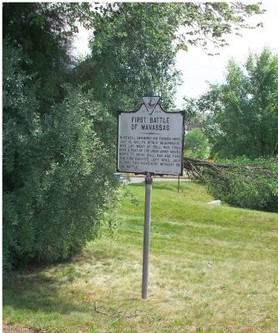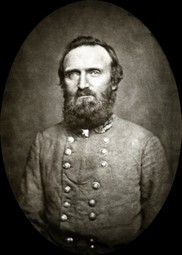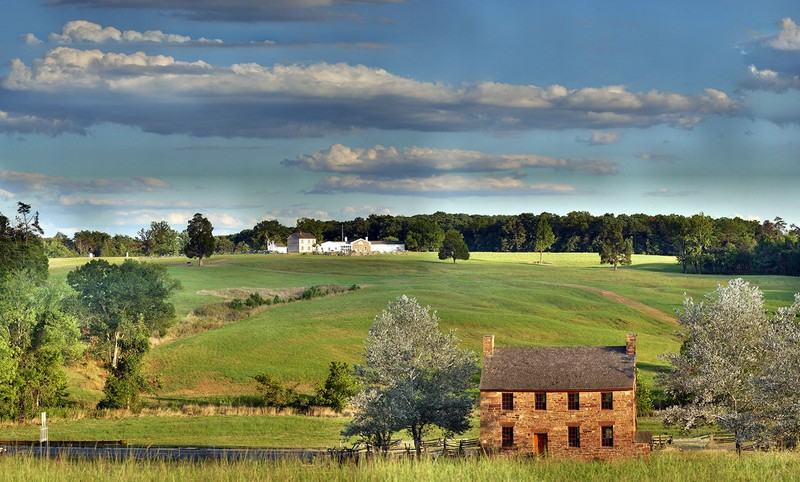First Battle of Manassas Historical Marker
Introduction
Text-to-speech Audio
Images
This is the marker summarizing the events before the Battle of Manassas. Where General McDowell gathered his troops and where they set off from for the battlefield.

A portrait of General Thomas "Stonewall" Jackson who was critical in the Confederate victory at Manassas.

A picture of the Manassas Battlefield where the Union and the Confederacy met in the first major battle of the Civil War.

Backstory and Context
Text-to-speech Audio
This spot shows where Union soldiers gathered and planned their attack on the Confederate encampment in Manassas and how they planned on doing so as well. Both the Confederate and the Union generals had a specific plan of attack for the battle of Manassas, and both sides failed in their objective. Their plans focused on putting pressure on one side of the enemies’ forces in order to overwhelm them and surround them. If both sides had been successful in doing so, they simply would have just turned around facing the opposite direction. Fortunately for the Confederacy, General Thomas “Stonewall” Jackson was able to hold his line and force back the Union lines.
The First Battle of Manassas provided important information to both sides about how the Civil War was going to play out. For the Union, it emphasized the ineptitude of the Generals they would go through and the difficulty they would have in planning and attacking the Confederates. For the Confederacy, it demonstrated how successful they could be by just surviving for as long as they could and defending their own areas. When Lincoln finally finds a General he can trust to lead the Union Army and when the Confederacy stops defending and starts attacking, the Civil War starts to turn, and the Union takes control.
This battle also set the tone for the rest of the Civil War and what either side was so expect from their enemy and the battles they fought. Although the First Battle of Manassas was relatively small compared to other encounters, it still contained heavy casualties for both sides. What was most important about the Battle of Manassas was the fact that the Confederacy won. The entire Union was shocked and stunned to witness such an embarrassment. The Confederacy was ecstatic and confident they could hold out and wait for the Union to give up; although it never happened, Lee and his army had won a major first battle in the Civil War that would keep them motivated for the following years to come.
Cite This Entry
Eric Hunter and David J. Trowbridge. "First Battle of Manassas Historical Marker ." Clio: Your Guide to History. July 9, 2018. Accessed August 13, 2025. https://theclio.com/entry/62584
Sources
Johnston, R.M. "The Battle of Bull Run." Civil War Home. February 3, 2002. Accessed June 28, 2018. http://www.civilwarhome.com/1manassas.htm.
"First Battle of Bull Run." History Channel. Accessed June 28, 2018. https://www.history.com/topics/american-civil-war/first-battle-of-bull-run.

